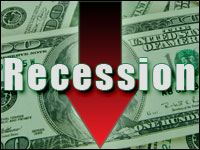
When it comes to technologies that provide the foundation for customer experience management, there is no shortage of options. The marketplace today is deluged with platforms, including self-service solutions that offer multimodal and open response survey vehicles for soliciting customer feedback across multiple channels, including in-store, email, website and call center.
While some of the more sophisticated platforms offer the ability to integrate CRM and transaction data, as well as data from social networking sites, many of the solutions offer similar benefits in terms of features and functionality. They also tend to have similar limitations when it comes to analyzing and reporting on the data in a way that is likely to have a significant business impact.
Importantly, no matter how sophisticated a platform’s analytics and reporting tools, actionable insights don’t get generated on their own. There is no “on” switch for spewing out a list of directives that, once implemented, will guarantee operational improvement, increased customer loyalty, new product innovation or any other desired business outcome.
Rather, actionable insights are the result of human beings with specialized expertise spending time with the data and working their unique brand of magic.
To that point, Gleanster research suggests that the caliber of insights — insights that should be regarded as the very lifeblood of the company — often leave a lot to be desired, only because this requisite expertise is lacking. Furthermore, that expertise is most likely to be found outside the four walls of the company. (Click here to download the related report.)
In fact, the research reveals that only 64 percent of companies that use self-service customer feedback technologies in conjunction with internal resources to conduct the data analysis are “satisfied” or “very satisfied” with the overall quality of the customer insights they’re able to glean from the data, compared to 87 percent of companies that partner with an outside vendor for these functions.
The disparity in outcomes between companies that do the heavy lifting in-house versus those that engage third-party resources speaks volumes about the value these resources can bring to the table.
Uncovering Insights
Outside experts are often in a position not only to uncover the business insights that a company would likely not be able to discover on its own, but also to prioritize the focus areas that will have the biggest impact on customer loyalty. The parking lot at an apparel store might be dirty, for example, but to have staff spend time cleaning it may not be a wise decision when the shirts on the shelves are in a state of disarray.
Uncovering insights means mapping the customer experience from the time a customer enters the retail establishment to the time of departure. Analytic modeling can assess the different factors that have the greatest impact on driving customer satisfaction and loyalty, allowing the company to then home in on those categories and attributes that can be changed.
“Products were well organized” may have been an important attribute that was uncovered during the loyalty model and a key driver of customer satisfaction with the retail store.
Uncovering insights also means benchmarking customer experiences against peers and top performers operating in the same competitive arena. Dissecting customer drivers is especially complex in businesses built on in-person, on-site customer experiences — where high-touch customer service and the ability to understand the subtle nuances of one-on-one interactions can ultimately have a very direct impact on revenue, profitability and overall shareholder value. Examples include retail, restaurant, hospitality, insurance and financial services.
The multi-unit nature of these businesses and the fact that many of them have independent ownership structures (e.g., franchises) means that the executives at the corporate level often lack visibility into customer experience performance.
To maintain brand consistency and to understand the specific performance areas most important to driving customer loyalty, as well as the performance gaps relative to the brand as a whole, it’s necessary to provide a centralized and unified view of the customer experience that goes beyond a standard, one-size-fits-all customer satisfaction survey.
Benchmarking Best Practices
Beyond the ability to apply a wealth of industry-specific expertise to the customer data analysis process, outside experts often possess proprietary data sets that can be used for benchmarking purposes, allowing clients to understand their performance relative to a peer set along key attributes and performance metrics and to learn how they stack up relative to top performers.
Indeed, the process of benchmarking best practices can generally be done only by a neutral third-party that, given its outside status, is in a position to be able to collect and analyze data from different companies in the aggregate. A good example of a vendor that has specialized industry expertise for this type of benchmarking is Empathica, whose 200-plus clients consist primarily of multi-unit retailers.
Best practices, which may or may not be formally codified in a knowledge management system, can provide an empirical basis for knowing what works and what doesn’t when it comes to turning the dial on key performance indicators like customer loyalty, customer retention and customer profitability.
A benchmark database is a give-and-get model. Clients allow their data to be added to the centralized repository and, in exchange, gain access to the combined data set. The data is blinded to protect client confidentiality; vendors would never disclose which company ranks in the No. 1 position and which ones are coming in dead last.
Benchmarking is a true telling mechanism. It allows the insights team to perform quarterly regression analysis with a great deal more sophistication in terms of understanding the key drivers on purchase behavior, propensity to recommend, operational improvement, and so on.
Importantly, benchmarking can take place not only across different companies in the same industry, but also across different locations in the same company. The ability to benchmark best practices — and, ultimately, establish a “center of excellence” — is a key success factor in any environment where there exists a significant variation in drivers, behaviors and performance outcomes. Again, it’s an area where outside expertise can bring a lot to the table.





















































